
Robert Schumann was a German composer, pianist, and influential music critic. He is widely regarded as one of the greatest composers of the Romantic era. Schumann left the study of law, intending to pursue a career as a virtuoso pianist. His teacher, Friedrich Wieck, a German pianist, had assured him that he could become the finest pianist in Europe, but a hand injury ended this dream. Schumann then focused his musical energies on composing.

Jakob Ludwig Felix Mendelssohn Bartholdy, born and widely known as Felix Mendelssohn, was a German composer, pianist, organist and conductor of the early Romantic period. Mendelssohn's compositions include symphonies, concertos, piano music, organ music and chamber music. His best-known works include the overture and incidental music for A Midsummer Night's Dream, the Italian Symphony, the Scottish Symphony, the oratorio St. Paul, the oratorio Elijah, the overture The Hebrides, the mature Violin Concerto and the String Octet. The melody for the Christmas carol "Hark! The Herald Angels Sing" is also his. Mendelssohn's Songs Without Words are his most famous solo piano compositions.

Fanny Mendelssohn was a German composer and pianist of the early Romantic era who was also known as Fanny (Cäcilie) Mendelssohn Bartholdy and, after her marriage, Fanny Hensel. In addition, she was referred to as Fanny Mendelssohn Hensel. Her compositions include a piano trio, a piano quartet, an orchestral overture, four cantatas, more than 125 pieces for the piano, and over 250 lieder, most of which went unpublished in her lifetime. Although praised for her piano technique, she rarely gave public performances outside her family circle.
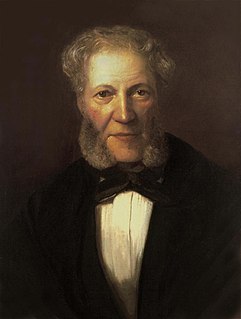
Isaac Ignaz Moscheles was a Bohemian piano virtuoso and composer. He was based initially in London and later at Leipzig, where he joined his friend and sometime pupil Felix Mendelssohn as professor of piano at the Conservatory.
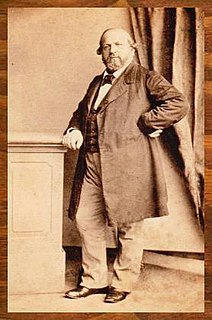
Ferdinand (von) Hiller was a German composer, conductor, pianist, writer and music director.

Carl Friedrich Zelter was a German composer, conductor and teacher of music. Working in his father's bricklaying business, Zelter attained mastership in that profession, and was a musical autodidact.

Marie Kiéné Bigot de Morogues was a French pianist and composer. She is best known for her sonatas and études.
Songs Without Words is a series of short lyrical piano songs by the Romantic composer Felix Mendelssohn, written between 1829 and 1845. His sister Fanny Mendelssohn and other composers also wrote pieces in the same genre.
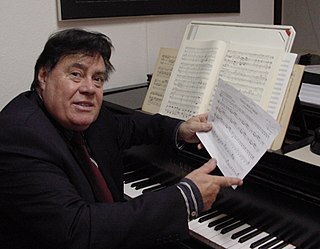
Walter Steffens is a German composer. He is noted for the diversity of his creative works, but has specialised in opera, such as Eli, as well as music inspired by paintings.

The Piano Trio No. 2 in C minor, Op. 66, was written by Felix Mendelssohn in 1845 and published in February 1846. The work is scored for a standard piano trio consisting of violin, cello and piano. Mendelssohn dedicated the work to his close friend and violinist, Louis Spohr, who played through the piece with the composer at least once.
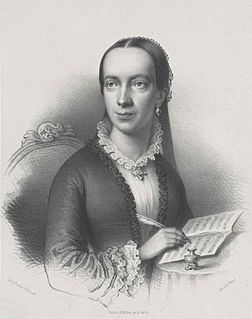
Emilie Luise Friderica Mayer was a German composer of Romantic music. Emilie Mayer began her serious compositional study relatively late in life, yet she was a very prolific composer, producing some 8 symphonies and at least 15 concert overtures, plus numerous chamber works and lieder. She was the Associate Director of the Opera Academy in Berlin.
The Mendelssohn Scholarship refers to two scholarships awarded in Germany and in the United Kingdom. Both commemorate the composer Felix Mendelssohn, and are awarded to promising young musicians to enable them to continue their development.
The Concerto for Two Pianos and Orchestra in A♭ major was written by Felix Mendelssohn when he was 15 years old. and is dated 12 November 1824. Written for two pianos and a full orchestra, the work received its first public performance in Berlin, in 1825. The composer and his mentor Ignaz Moscheles, who inspired its composition, were the soloists. He performed it again on 20 February 1827 at Stettin, where the cathedral organist, composer, baritone singer and conductor Carl Loewe organised concerts. Loewe and Mendelssohn were the two piano soloists on that occasion.

Delphine von Schauroth was a German pianist and composer.

The Easter Sonata is a piano sonata in the key of A major, composed by Fanny Mendelssohn. It was lost for 150 years and when found attributed to her brother Felix, before finally being recognized as hers. It premiered in her name on 7 September 2012, played by Andrea Lam. It received a second performance by Sofya Gulyak on 8 March 2017 for BBC Radio 3. It was the second sonata composed by Fanny Mendelssohn and was completed in 1828.

The Composers Quarter Hamburg is a gathering of six museums in the Peterstraße in Hamburg-Neustadt, Germany. The associated museums have one or two classical composers as a theme who were born or have lived in the city of Hamburg.

The Gustav Mahler Museum is a museum in Hamburg-Neustadt, Germany, dedicated to the memory of the classical composer Gustav Mahler. Established in an historic building in the Composers Quarter, it opened on 29 May 2018.
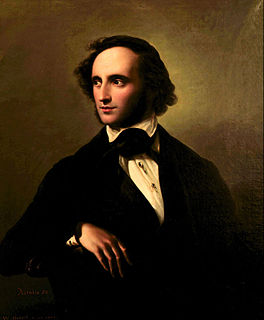
Jauchzet dem Herrn, alle Welt, WoO. 28, is an anthem for choir a cappella, a setting of Psalm 100 in German composed by Felix Mendelssohn in 1844. It was published in 1855 after the composer's death. It is the most popular setting of Psalm 100 by Mendelssohn, who also wrote a four-part motet in Latin, "Jubilate Deo", as part of Three Motets, Op. 69, in 1847 for use in the Church of England, which adds a doxology to the psalm text. He set the psalm again, but with paraphrased text by Ambrosius Lobwasser, "Ihr Völker auf der Erde all", as part of Sieben Psalmen, harmonising melodies from the Genevan Psalter.
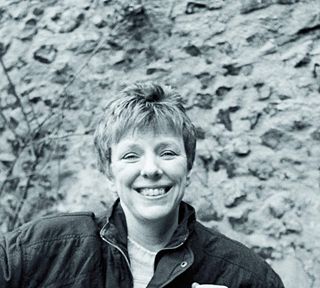
Eva-Ruth Weissweiler is a German writer, musicologist and non fiction writer.
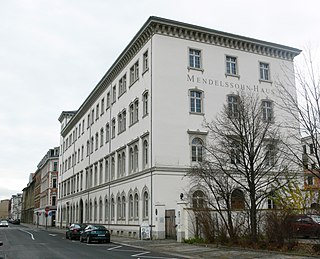
Mendelssohn House is a museum in Leipzig in Saxony, Germany. The composer Felix Mendelssohn lived here from 1845 until his death in 1847; it now contains a collection about the life and work of the composer.




















